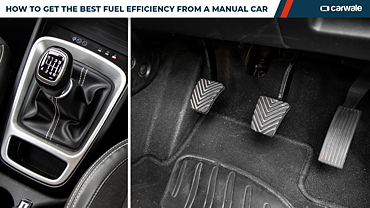The advent of the automatics in the small car segment has been swift and thorough. The launch of the Celerio at the 2014 Auto Expo seemed to have opened the flood gates; the penetration continued through to 2015 and today there are automatics in every range including the very entry-level A segment consisting of Nanos and Altos.

Some may argue that these are technically not proper automatics and regular manual cars with automatic interface, but the fact is they do not have the clutch pedal and offer as much ease of driving as any of the conventional automatic cars.
On the launch day of the new Nano Easy Shift AMT we pit it against the Maruti Suzuki Alto AMT for a spec comparison, to find out if can it can beat the latter to be the most practical city car.
The Alto K10 was updated recently and looks more mature and premium compared to its predecessor. The primary changes are to the front which include a new bumper, sweptback headlamps and more elaborate wheel arches that make the car appear bigger than it actually is. Keeping with the trend the car gets plenty of cuts and creases to the side and rear, there is also some chrome at the front for the delight of the patrons.

The facelift of the GenX Nano comparatively has fewer changes, it gets a new bumper both at the front and the back, few chrome and black elements at the front and an openable boot that makes it more conventional. While everyone will not be able to point out the changes in the new car, it is evident that the quality of the car has seen a drastic improvement.
 Purely on looks, everyone in the team agrees that the Nano with a smiling front is a better looking car of the two. However, it looks unconventional and that does not work in its favour. The design of the Alto K10 is far more traditional and people looking to buy their first car generally prefer sticking to the basics.
Purely on looks, everyone in the team agrees that the Nano with a smiling front is a better looking car of the two. However, it looks unconventional and that does not work in its favour. The design of the Alto K10 is far more traditional and people looking to buy their first car generally prefer sticking to the basics.
Apart from the mechanicals, this is where both the cars have received maximum alterations. Maruti has comprehensively reworked the interior of the Alto for the first time since its launch in 2004 and it now gets a dual-tone dashboard, along with a slightly bigger feature list.

The rest of the interior is also clothed in light colour and that makes the cabin look roomy. The space here is still at a premium, the front seats are good enough but it is a struggle for the taller passengers on the rear bench. Moreover, Maruti calls this car a five-seater, but that will certainly be a squeeze.
The Nano cabin is more spacious and it can actually fit five people when required. The boot space of the Nano at 95 litre however is miniscule compared to the 177 litre space offered in the Maruti hatchback. Tata has always used light colours for the cabin and the difference in the GenX is once again more to do with quality. The door closes with a nice thud which is a rarity in this segment. The music system is also better; apart from the USB and AUX input the Nano system has Bluetooth connectivity for both telephone and music streaming.

In terms of cabin space and features, the Nano GenX is a clear winner, boot space however is a lot more in the Alto K10. We ideally want both the carmakers to improve on the interior ergonomics as there is no space to keep the smart phones while charging in the Nano and the only cup holder in the Alto has been omitted to make space for the AMT gearbox.
The safety standards of both these cars are very poor - the Alto does get airbags, but they would only do so much due to the structural limitations of the age old platform and Nano gets none.
The Alto K10 uses a decent three-cylinder engine developing 67bhp and 90Nm of torque. Moreover, its power-to-weight ratio is also very favourable, giving it performance comparable with much bigger hatchbacks. It uses the same five-speed AMT from the Celerio, making it one of the most affordable automatic cars in the country. The ARAI efficiency of the Alto is rated at 24.07kmpl.

The Nano GenX continues to use the two-cylinder 624cc unit developing 37bhp and 51Nm of torque. The numbers are certainly much lower compared to the Alto K10, but good enough for a car that is meant to ply on the city roads. Tata uses the third generation AMT for the Nano and it seems that the drivability in terms of gear shifts is actually better than that of the K10. In terms of efficiency, the Nano lags behind with a claimed figure of 21.9kmpl.

There is no doubt that the Alto K10 is the better car both in terms of performance and efficiency, but the Nano offers better driving dynamics in the city with lighter steering, better driving position and smaller turning radius.
With a 1.0-litre engine, the Alto K10 makes a much stronger case for itself as a car that can be driven both in the cities and on the highways. The Nano on the other hand is a better car if city driving tops the priority list.

The Nano certainly is the better car in terms of cabin space and features and we would say it is a tie on looks with Alto using the traditional design, while the Nano offers more contemporary looks.

To sum up things, the Alto is a more versatile package offering more utility, but if the car is mostly for city use, the Nano is a better option and much lighter on the pocket as well.





